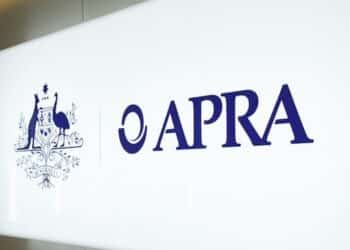Further, 1,900 of those advisers primarily moved onto privately-owned licensees, according to the most recent Australian Financial Advice Landscape report from Adviser Ratings.
“The advice industry is changing shape in the blinking of an eye,” said Adviser Ratings chief executive Mark Hoven.
“The continued mass migration of advisers in 2019 has been defined by the synchronised withdrawal from advice by the major banks, and AMP rebalancing.”
FASEA extension slowing down industry exodus
However, there was a marked slowdown in the third quarter of 2019 following the government’s announced extensions for advisers to meet FASEA educational standards deadlines.
“Our latest research provides a much clearer picture of the education gap confronting the advice industry, and it’s not as bad as some of the commentary suggests,” Mr Hoven said.
“Should the government legislate the proposed 2021/2026 FASEA deadline extensions next year, more advisers may choose to stay and study.”
Digital advice delivered by automated personal finance tools was also cited by the report as the new frontier for the wealth industry.
“Digital advice is a genuine solution to help more consumers with their personal finances, and for advice firms as an alternative to orphaning their unprofitable advised clients,” Mr Hoven said.
“Seventy-two per cent of institutions and 79 per cent of smart tool providers that we surveyed are confident about the future of the digital tools sector.
“However, this fledgling sector remains challenged by lack of scale and brand and is looking for institutional partners, primarily banks, super funds, advice licensees and asset managers.”
Advisers shedding unprofitable clients
The Adviser Ratings report noted that advisers are responding to revenue pressures by letting go of unprofitable clients, raising fees on average by 12 per cent to $2,800, and moving away from asset-based pricing with the balance of fixed fees rising to 70 per cent of total revenue earned.
“We are witnessing advisers rebalancing their business models to become more focused in specialised areas or embracing the integrated services model that combines financial advice with accounting and mortgage broking,” said Encore Advisory Group chief executive Tom Reddacliff.
In addition, around 1,500 practices representing 17 per cent of the market advising $190 billion of wealth are looking to sell their business.
Over 80 per cent of those businesses have fewer than four advisers, while only the larger practices typically with revenue above $500,000 are likely to be sold as going concerns.
“With income eroded due to regulatory impacts and valuation multiples falling on retained revenue, many of these practices are forced sellers and invariably price takers,” Mr Reddacliff said.




I am surprised by the $2,800 figure ?!. You guys are low balling given the compliance hurdles. Get with the program.
i have been hearing minimum of $3000
If its below $4,000 I doubt you are meeting compliance requirements.
$2,800 being the average fee – the average Australian cannot afford that. Advice isn’t for the average Australian.
$2800 per client and your business wouldn’t survive !
Yet was that not one of the royal commisions points, to make financial planning available and affordable to the average Australian.
No, I think it was the opposite point, for advice to be reduced to those that definitely ‘need’ it and can afford it i.e. complex retirement or other situations that need more than just a (relatively) simple product. Or at least that is how Hayne and ASIC view it. They want the average Australian to be advised online or by their super fund…you know, they guys that have no conflicts of interest and abide by the best duty to the client…unless it is intra-fund advice…that’s different. That isn’t advice….apparently…haha.
Oh yes the same super funds dont have any conflict of interest at all, just ask them
So there is no value in helping clients navigate the current market environment ? The big con being sold is that clients will only value an advice relationship if they have complex needs. The huge transfers to cash by members in industry super funds is a stark reminder of the wealth destruction individuals are capable of.
“Should the government legislate”.
I acknowledge the government is expected to legislate the extension, however there will also be parliamentary discussion, prior to the legislation being passed.
The extension is not guaranteed.
I know, I’m being a nervous Nellie, but based on the last two years, nervous may be appropriate.
Phillip, I agree with you. I am amazed that people would base their business planning on legislation that needs to pass both houses.Just get it done.
Um, why not just go and do the next sitting of the exam (and then start studying)? What difference does the extension make? I have no great love for these new FASEA requirements but unless you are going to retire/leave, what difference does the 1+2 extension make?